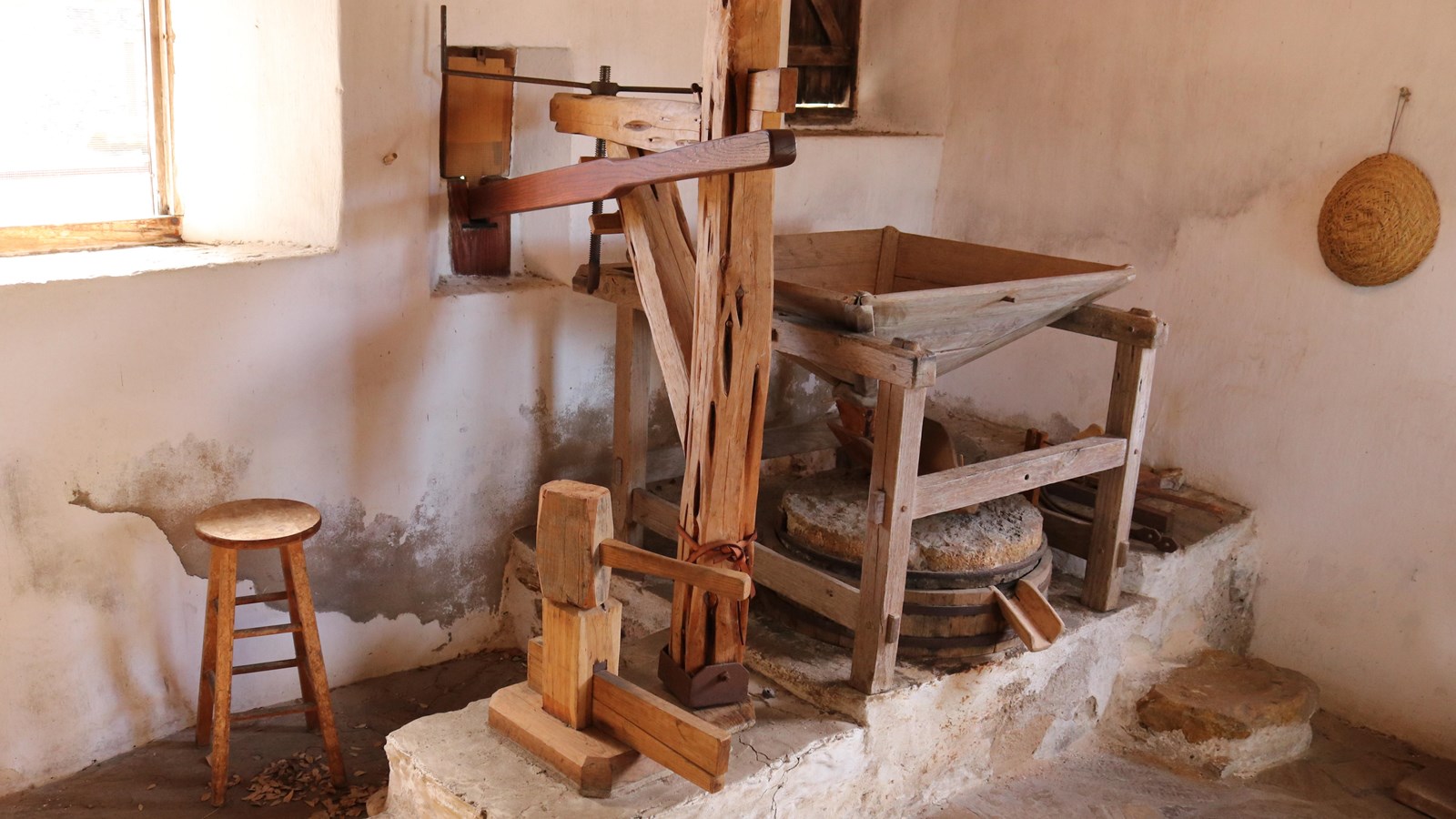Last updated: March 15, 2024
Place
Mission San José Gristmill

NPS Photo
Accessible Rooms, Accessible Sites, Benches/Seating, Bicycle - Rack, Cellular Signal, Historical/Interpretive Information/Exhibits, Information, Internet/WiFi Available, Parking - Auto, Parking - Bus/RV, Recycling, Trash/Litter Receptacles, Wheelchair Accessible
In 1778, Commandant General Domingo Caballo ordered the missions to grow wheat. Beginning in 1779, several attempts were made to grow wheat but failed due to storms and seed germination. The first successful harvest of wheat was in 1794 at Mission San Jose. The same year the mill was completed.
The gristmill at Mission San Jose was the first mill in Texas and it was powered by water from the acequia. The mill was likely built into the quarried area after the lime kilns were discontinued. The lime kilns can still be seen today at the back of the mill. There you will see three circular indentations into the wall. These are remnants of the lime kilns.
The mill you see today was restored in the 1930’s.
Acequias: The Lifeblood of the Missions
Acequias not only irrigated crops but they also powered machinery.
The acequia water was diverted through a ditch and sluice gate to the gristmill forebay. The Miller would open the gate when he was milling the wheat. The water would flow through the sluice gate to the forebay, a containment area to hold the water. The forebay gate, located at the bottom of the forebay, would be closed. Water would fill the forebay. Once filled, the miller would open the forebay gate to allow water to flow through the forebay channel to move the horizontal wooden water wheel. Water flowed out of the forebay channel and powered the wooden water wheel pushing the wheel counter clockwise. Once the water had powered the wheel, the water would flood a field behind the mill. Water continued to flow from the acequia into the forebay during milling operations to maintain a steady flow of water to the water wheel.
Inside the mill house you can see the two mill stones. The wooden water wheel below moved the grind stones in the mill house. The miller would pour flour into the wooden hopper, then the wheat would spread between the two mill stones and be ground into flour. Flour would pour out the bottom as the finished product.
- Duration:
- 1 minute, 59 seconds
The first gristmill in Texas is located just beyond the walls of Mission San José. Powered by water, the mill could grind 60 pounds of wheat into flour in just one hour. The mill brought change to the community, shaped Tejano culture, and permanently shifted the food staples of local people.
